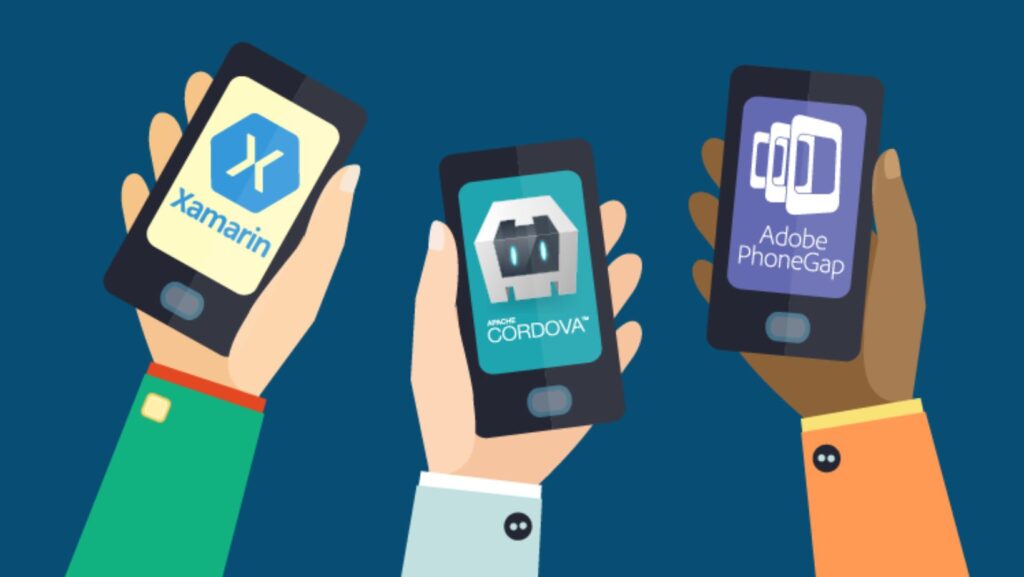Cross Platform App Development
As someone deeply immersed in the world of cross platform app development, I find cross-platform app development to be a captivating subject. This approach allows developers like me to create applications that can run on multiple operating systems using a single codebase. The efficiency and cost-effectiveness of this method are truly remarkable.
When delving into the realm of cross-platform app development, one cannot ignore the importance of tools such as React Native, Flutter, Xamarin, and others. These frameworks provide developers with the means to build high-quality apps for iOS and Android simultaneously, streamlining the development process significantly.
The ability to reach a broader audience by deploying an application across various platforms is a compelling reason why cross-platform app development has gained immense popularity in recent years. By leveraging this technique effectively, I’ve been able to enhance user engagement and expand my app’s reach without having to manage separate codebases for different platforms.

Understanding Cross Platform App Development
When it comes to Cross Platform App Development, the concept revolves around creating applications that can run smoothly on multiple operating systems. This approach allows developers to write code once and deploy it across various platforms, such as iOS, Android, and Windows. By using frameworks like React Native, Flutter, or Xamarin, developers can achieve this cross-compatibility without compromising the user experience.
One significant advantage of Cross Platform App Development is its cost-effectiveness. Instead of building separate apps for each platform, developers can save time and resources by utilizing a single codebase for multiple operating systems. This streamlined process not only speeds up development but also simplifies maintenance and updates in the long run.
Another key benefit is enhanced reach. Cross Platform Apps enable businesses to target a broader audience since they can cater to users across different devices and platforms simultaneously. This wider reach can translate into increased visibility, engagement, and ultimately higher ROI for companies looking to expand their market presence.
Moreover, Cross Platform Development promotes consistency in design and functionality. By maintaining uniformity across various platforms, developers can ensure that users have a seamless experience regardless of the device they are using. This cohesive approach helps in establishing brand identity and fostering user trust and loyalty.
In conclusion, embracing Cross Platform App Development opens up a world of possibilities for businesses seeking efficient solutions with broad market appeal. By leveraging the power of cross-compatibility frameworks, developers can create versatile applications that resonate with diverse audiences while optimizing costs and maximizing impact.

Benefits of Cross Platform App Development
When considering the benefits of Cross Platform App Development, it’s crucial to recognize how this approach can streamline the app development process and enhance the overall user experience. Here are some key advantages:
- COST-EFFECTIVENESS: Developing a single codebase that can be deployed across multiple platforms such as iOS and Android helps in reducing development costs significantly. Companies can save time and resources by avoiding the need to build separate apps for each platform.
- CONSISTENT USER EXPERIENCE: With cross-platform development, ensuring a consistent user experience across different devices becomes more achievable. Users expect seamless performance regardless of whether they are using a smartphone, tablet, or desktop. Cross-platform development facilitates this consistency.
- FASTER TIME TO MARKET: By leveraging cross-platform frameworks like React Native or Flutter, developers can expedite the app development process. These frameworks offer pre-built components and modules that accelerate coding tasks, enabling faster deployment of apps into the market.
- EASIER MAINTENANCE: Managing updates and implementing changes is more straightforward with cross-platform apps since modifications made to the codebase reflect across all platforms simultaneously. This ease of maintenance translates into quicker bug fixes and feature enhancements.
- BROADER REACH: Targeting a wider audience is simplified with cross-platform app development as it allows businesses to reach users on various operating systems without having to invest in separate native apps for each platform. This broader reach can lead to increased user engagement and higher conversion rates.
Considering these advantages, it’s evident that adopting a cross-platform approach offers numerous benefits ranging from cost efficiency to improved scalability. Embracing this methodology empowers businesses to create robust applications that cater effectively to diverse audiences while optimizing resources efficiently.


